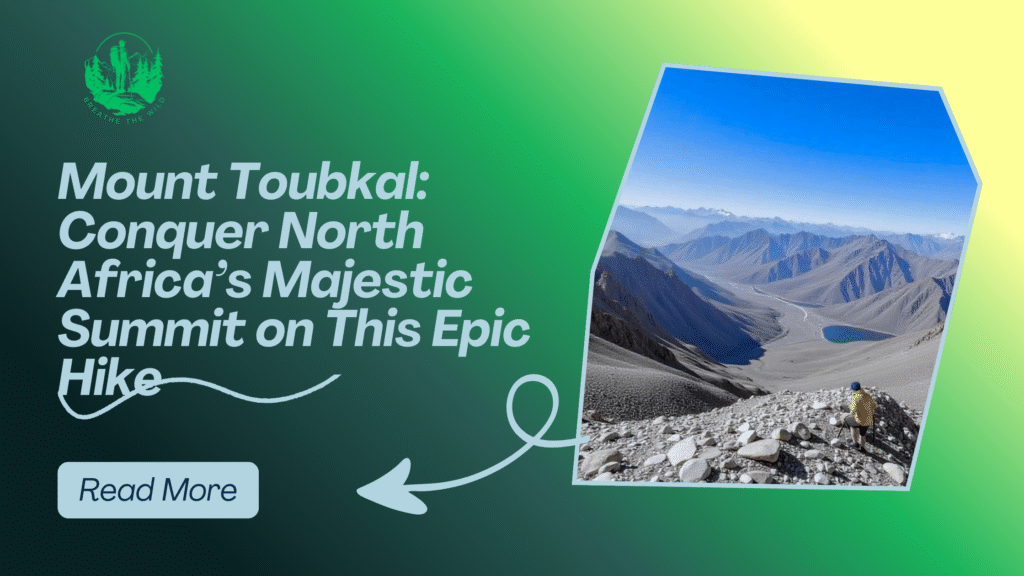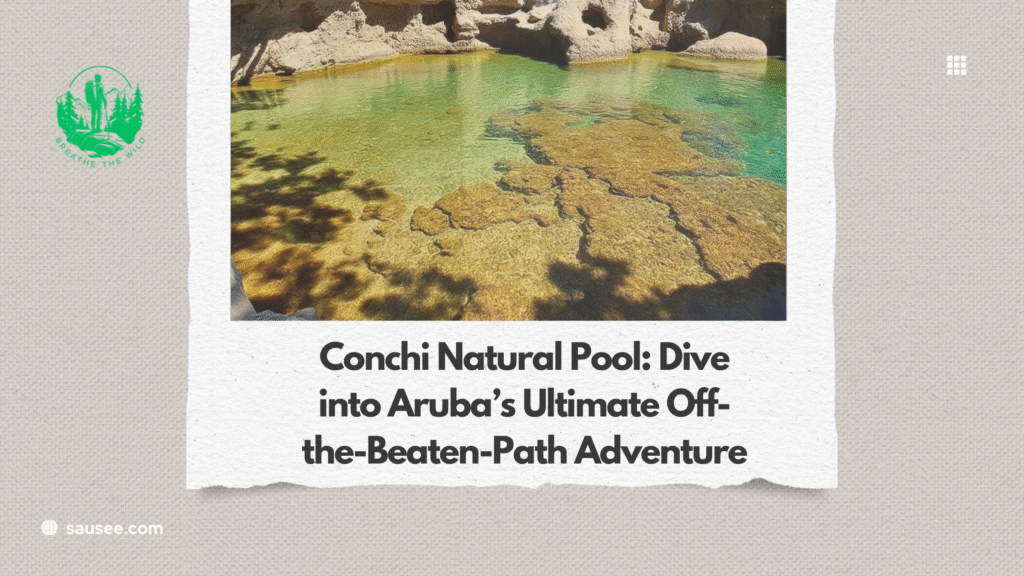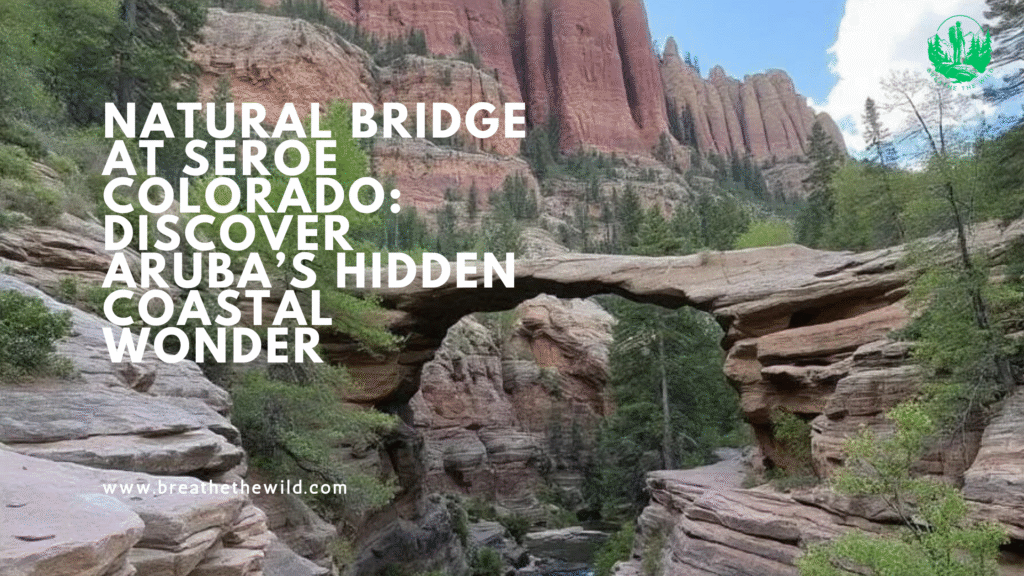Table of Contents
Introduction
Toubkal is merely a mountain, yet when you believe that the mountains need to be some sort of mountain with an EPICS that borders the peak, has the photogenic touch, and in the process, should it also have a slice of culture, and not so difficult, the thought process, Toubkal is the best place to grow.
Standing just 4,167 meters (13,671 feet) high alone, the fact that it is the highest mountain on the continent of North Africa, Mount Toubkal is no longer just the highest mountain that one could find in the part of Africa or at least it is among the perfect treks that a mountain hiking enthusiast would not have trouble visiting without traveling across the Himalayas or even to the Andes.
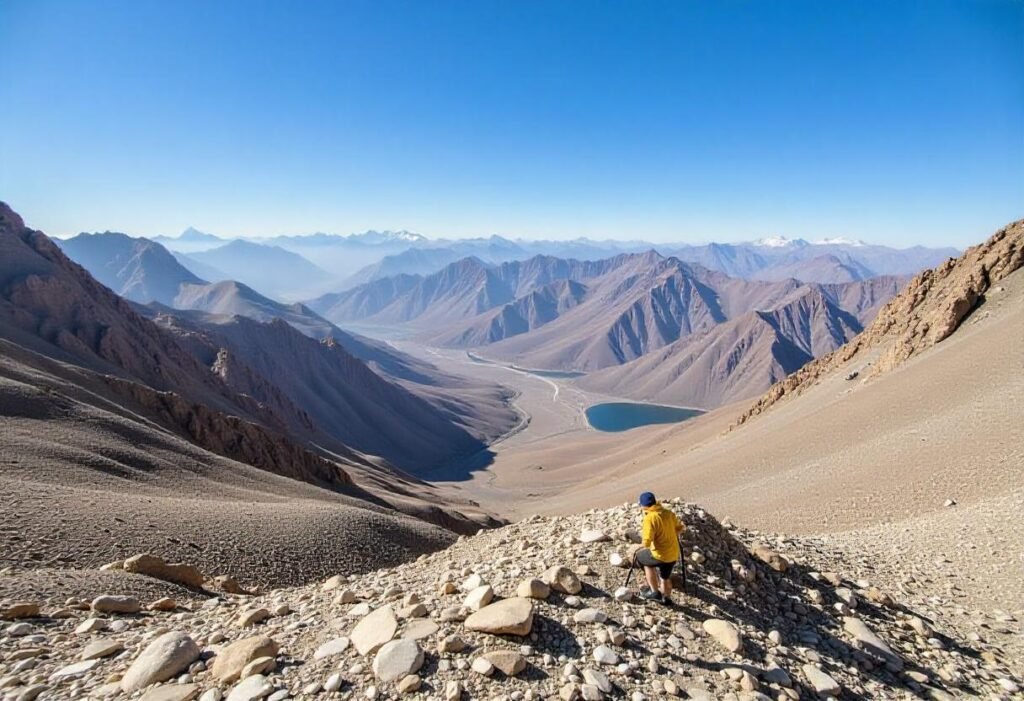
The region has the highest mountain, crowned by Mount Toubkal at 13,871 feet, which is accessible in a couple of hours to the busy city of Marrakech, located in the High Atlas barren mountains. No matter where you begin your trek, be it as a veteran trekker or as a novice trekker intending to get fit, the journey to the summit of the Toubkal is not only difficult, but very rewarding.
This comprehensive guide will tell you all you should know to get ready to climb, the paths you might take, when you can go, equipment and organisational ideas, altitude acclimatisation, and how to get the most out of your visit to the Atlas Mountains. One should go to the peak heights of mountain Toubkal as soon as possible since every step will bring you closer to the feelings of inexplicable views and personal accomplishment.
What Makes Mount Toubkal a Bucket-List Adventure
Mount Toubkal is the highest mountain in North Africa that standing elegantly on the High Atlas Mountains in Morocco. The head of the civilisation is in the south of Marrakech, only 63km away, so in a sense this is immersion by nature, and yet this camp is nearby enough to have it conveniently. It is a rugged and intrepid landscape; the valleys are dramatic, there are rocky ridges, and the scenes are alpine, and they take your breath away in every direction.
Mount Toubkal has the advantage of the best access, with the adventure incorporated into it. In its warm season of the year, the trail is not technical, and thus it can be exposed to being hiked by individuals who are fairly fit and capable of coping with the demanding climatic conditions. However, the climbing is not that easy a task either physically and morally- a quite good benefit to all the individuals who need to prove their powers to the end and get something worthwhile.
Other than the mountain itself, Toubkal also ensures a rich culture. One can locate the traditional Berber villages propped with their mud bricks hanging over the mountains and people who accommodate the guests with Moroccan mint teas and welcomes. This is not simply a trek but more of an individual experience, and the tone the cultural immersion pours over it lets you feel not only the landscape, but also the people you come across.
The Classic Route: What to Expect on the Toubkal Ascent
The trek to the mountain settlement of Imlil, which lasts 2 days, is regarded as the most popular route when it comes to climbing Mount Toubkal. The first day consists of a slow 5-6 hour climb to Refuge du Toubkal (and sometimes referred to as Neltner Refuge), up through terraced farmland and mule trains, not to mention sheer alpine vistas. The former is about 11 kilometers long, with one more than 1,400 meters long climb.
The second day starts under darkness in the middle of the night, advancing on the steep scree-covered slopes towards the summit ridge as the daylight advances. The last leg is not only adventurous but also a strenuous journey, particularly along high altitudes, but the scenery is rewarding to the eye because the location offers a 360-degree view of the Atlas Mountains on one front and the Sahara desert on the south, and more mountains on the other side. You will drop back down to the refuge and proceed on to Imlil, being beamed by a sunrise or mid-morning light.
Further time would allow the addition of more epic, multiday circuits to reach other nearby mountains, such as Ouanoukri, or multi-day epics way back in little-used valleys. These are alternatives that provide an even greater immersive experience of trail-trekking and are not quite congested.
Best Time to Hike Mount Toubkal: Weather, Seasons & Safety
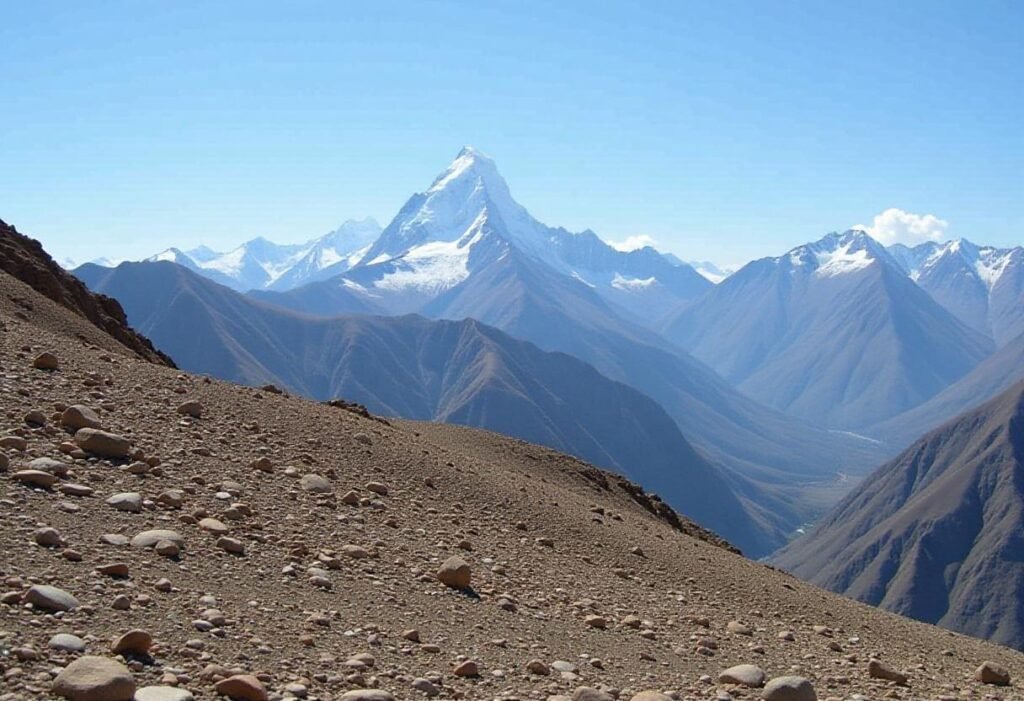
The time you embark on the trek is a very significant factor, and it is owed to your welfare and security in the mountains. The best period to visit the Park is between April and October because the snow will have melted and therefore the value of availed trails will be high. Spring (April to June): beige valleys and wild wildflowers, spring (July to around early September), clearest summit conditions- but it can get very hot down below.
The second super season (September through early November) during which to hike falls has cooler air and fewer people on the trail. But towards the latter end of November, the snows fall at the higher levels, and now the route is a winter mountaineering route and has as necessary equipment ice axe, crampons, and alpine experience.
Duringmid-winter do not hike (December to March) at all unless you or your group is well prepared to hike in the snow or you are with proper skills and mountain guides. The target of the majority of the hikers would certainly involve scaling to the peak so as to witness the sunrise, and this would clearly involve waking up very early in the morning out of the refuge to witness the sunrise and the High Atlas being turned on by the sparkling beams of light.
Your weather condition should be looked into in advance, and you should not be surprised to experience a sudden shift in temperature even during the mild months of summer. The existence of multi-layered clothing, water, and sun-blocking products is of high importance even in the hottest season.
Check Out: Fish River Canyon: Embark on the Ultimate Journey Through Africa’s Grandest Gorge.
How to Prepare for the Toubkal Trek
In the normal Mount Toubkal game route, no technical climbing is involved, though high end. The mountains involve long periods of uphill climbs, steep inclinations, and the altitude factors that can prove quite daunting even to the ardent trekkers. With the right kind of training and planning, the expedition should not be an issue as long as you are not a couch potato.
One of the best keys that could help in your climb is altitude acclimatization. This is thin air with very little air above the 4000 metres, with the possibility of altitude sickness setting in at a somewhat early phase. Taking day one or two in Imlil (1740m) before you start your trek is highly desirable to allow your body to acclimatise. In hiking, maintain the pace to be lower pace, drink water, and rest where there is enough.
It is both physically and mentally hard, particularly the total ascent with highpoint push beginning in darkness and seemingly never ending unless you are specially trained. Not moving fast and getting adequate rest last night may be such a good investment, particularly when the mind is well primed. It does not only entail calling upon your physical preparedness, but it also involves preparations on your part, physically, to be in the position of reaching the top, without any hiccups otherwise.
Gear Guide: What to Pack for Mount Toubkal
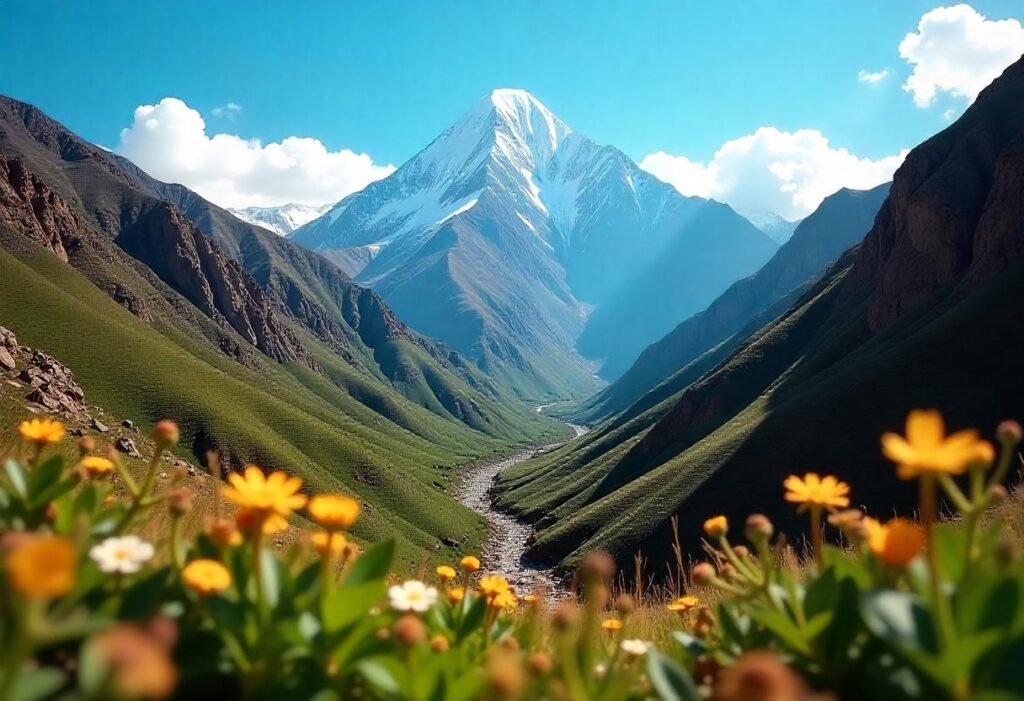
There is no doubt that when one is taking Mount Toubkal, smart packing is important. Being prepared to sudden weather change is merely important, specifically, in the case of going up the mountains. Start with a moisture-wicking bottom and an insulating mid-layer, and a waterproof jacket. It is hot in the valleys, to ice-cold on top. The secret is layering.
They are a requirement and without solid boots, hiking poles to manage descent, a headlamp so that one can start climbing early, and a water supply (2L minimum). Sunblock and sunglasses, as well as a sun hat, are also compulsory, as at the high altitude, exposure to UV rays is very high.
Other gear, depending on your time of trekking, winter or the shoulder seasons, may require the extra gear (crampons and gaiters, gloves, and an ice axe), especially when snow has already fallen on your route. Rentals, you can enquire with your tour outfitter or with a local gear shop. You complete your kit with a small first-aid kit, snacks, and a lightweight sleeping bag (unless availing of refuges that have full bedding).
Go Guided or Go Solo? Choosing Your Trekking Style
Perhaps one of the critical decisions in your Mount Toubkal trekking strategy would be to trek with or without a guide. Although it can be self-managed through fair conditions, it has substantial benefits to being guided through trekking, and they are as follows: concerning direction, safety, and assessment of the culture.
It is highly recommended to travel in consultation with a guide, especially when you have not hitherto ventured into trekking or hiking activities at altitudes in Morocco. Good knowledge of the terrain and weather is possible through the local guides, and most of them speak English, French, and Berber as well. In the majority of guided trekking, there is usually a haul of mules issued, and you need not carry all your gear; hence, the trek is more pleasant.
Though in good conditions, solo hiking is also allowed, it is now the rule that states that a visit to Toubkal should include a registered local guide for a hike up the mountain (this was dictated by regulations issued recently when the common denominator was safety). At any rate, one should update the existing policy before travelling.
Reservations with a good tour operator is my advice – look for tour operators with certified guides or well well-designed itinerary, or positive reviews. There is a great variety of packages, which may be booked online or even through your hotels in Marrakech or Imlil.
Conclusion: Reach New Heights on Mount Toubkal—More Than Just a Climb
Besides being the tallest mountain in North Africa, a climb of Toubkal is a journey to the core of the beauty and cultural diversity of the kingdom of Morocco. You might be attempting to bag your first mountain top down in high altitude, or just visiting again to enjoy the spectacular scenery and the homely Berber hospitality, but whatever way you may decide to go back to Toubka, you can rest assured that you are in for a memorable trekking experience that will stay with you always.
With good preparation, good equipment a good attitudinal frame of mind, the rugged and yet out there to be conquered hike can become a lifetime experience. And in each step there is a discovery to be made–the silence of the mountains, the glowing villages beneath their feet, the excitement of being at the top of the world and looking forth over the mammoth range of the Atlas.
So when you are ready, lace up your hiking boots, toughen yourself up, and prepare to scale new heights on Mount Toubkal-where nature and hassle go hand in hand and where each hurdle is commensurate to the reward.
For more info: Click Here.
FAQs About Mount Toubkal Trekking
1. How long is the climb up Mount Toubkal?
Normally, this is 2 days where one traverses to the refuge on day 1, and the next day is focused on the summit and down to Imlil. You can do multi-day, in which individuals can have a desire to either acclimatize or explore the area.
2. What about taking a guide up Mount Toubkal?
Yes. According to the new legislation in Morocco, it will be required to locally hire a licensed holder as the form of precaution. Organised hiking can also be practical in terms of guidance, cultural eexchangeand assistance (travel by mule).
3. Does Toubkal Mountain accept inexperienced trekkers?
Yes—with preparation. Though the hikers will not need technical capacity when accessing this trail in the summer, the hikers are expected to be endowed with fitness normal fitness level and have a disposition to withstand the effects of high altitude. The amateurs are to train in advance, and a guided trek can be evaluated.

